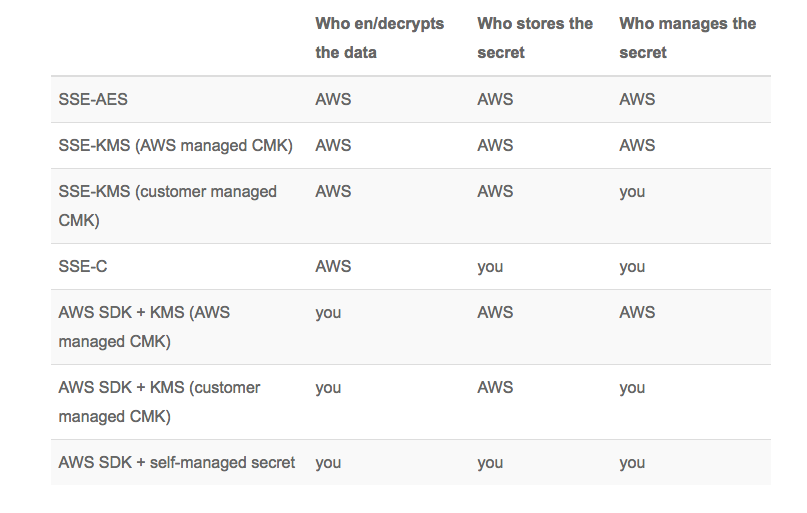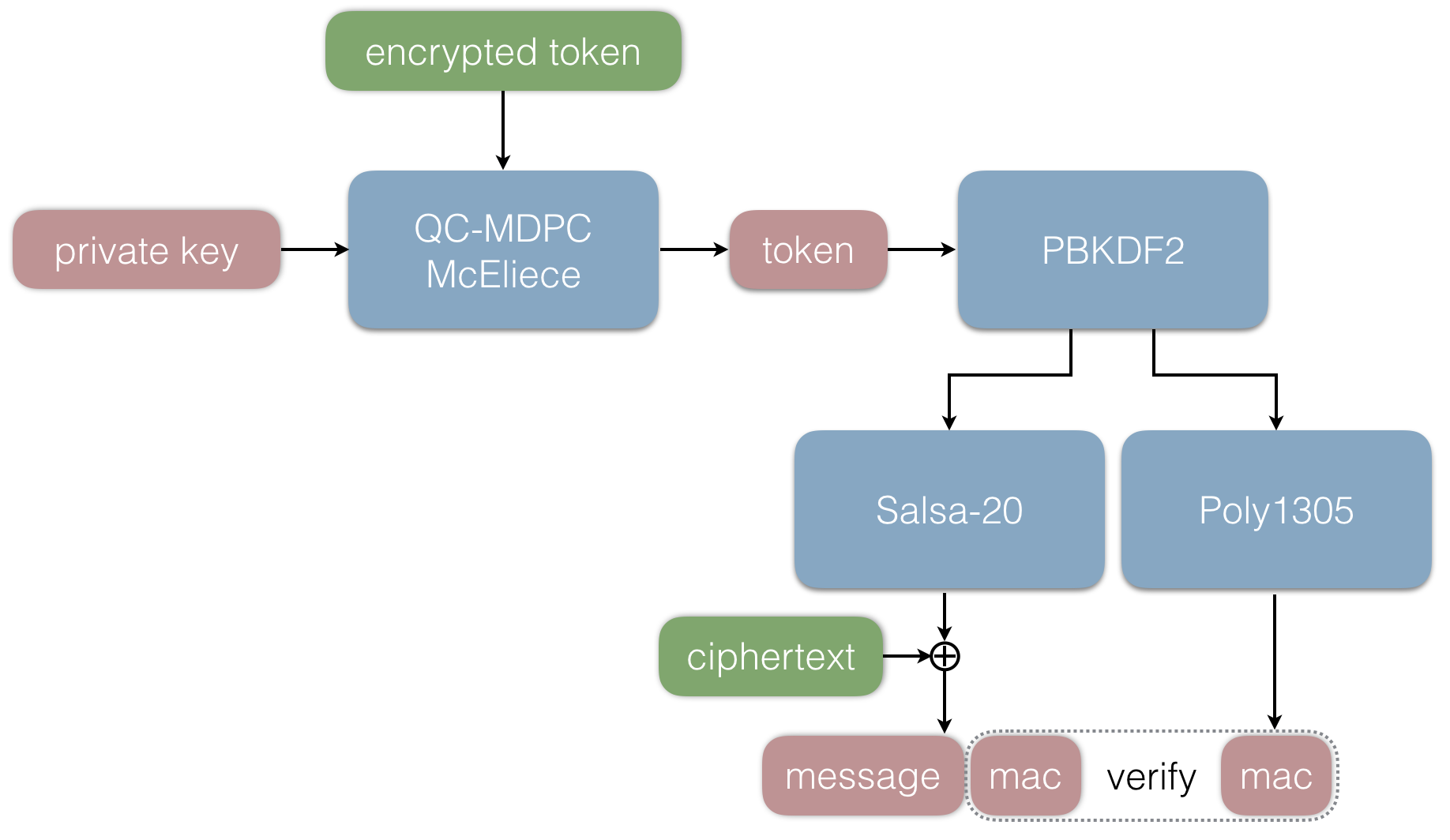Aes256 Master Symmetric Key Python Generate
- Asymmetric Key Encryption
- Aes 256 Master Symmetric Key Python Generate Number
- Aes256 Master Symmetric Key Python Generate Key
- Aes 256 Master Symmetric Key Python Generate Function
- Aes 256 Master Symmetric Key Python Generate Code
Need to encrypt some text with a password or private key in Python? You certainly came to the right place. AES-256 is a solid symmetric cipher that is commonly used to encrypt data for oneself.
- Apr 25, 2016 how do i generate a AES-256 symmetric key using php. Ask Question. But got nowhere. So here plain and simple yes or no would be awesome. I have been asked to create an 'AES-256 symmetric (also called 'session') key' - not encryption, just the key - to use to sign data within a soap message headers. The requirement is that the key is 256.
- Verilog implementation of the symmetric block cipher AES (Advanced Encryption Standard) as specified in NIST FIPS 197. This implementation supports 128 and 256 bit keys. secworks/aes. Skip to content. Secworks / aes. Nistaes256key = (0x603deb10, 0x15ca71be, 0x2b73aef0, 0x857d7781.
- Jan 01, 2019 Symmetric encryption. Module:: cryptography.hazmat.primitives.ciphers Symmetric encryption is a way to encrypt or hide the contents of material where the sender and receiver both use the same secret key. Note that symmetric encryption is not sufficient for most applications because it only provides secrecy but not authenticity. That means an.
Generates a symmetric key and specifies its properties in SQL Server.
This feature is incompatible with database export using Data Tier Application Framework (DACFx). You must drop all symmetric keys before exporting.
Syntax
Arguments
Key_name
Specifies the unique name by which the symmetric key is known in the database. Temporary keys are designated when the key_name begins with one number (#) sign. For example, #temporaryKey900007. You cannot create a symmetric key that has a name that starts with more than one #. You cannot create a temporary symmetric key using an EKM provider.
AUTHORIZATION owner_name
Specifies the name of the database user or application role that will own this key.
FROM PROVIDER provider_name
Specifies an Extensible Key Management (EKM) provider and name. The key is not exported from the EKM device. The provider must be defined first using the CREATE PROVIDER statement. For more information about creating external key providers, see Extensible Key Management (EKM).
Note
This option is not available in a contained database.
KEY_SOURCE ='pass_phrase'
Specifies a pass phrase from which to derive the key.
IDENTITY_VALUE ='identity_phrase'
Specifies an identity phrase from which to generate a GUID for tagging data that is encrypted with a temporary key.
PROVIDER_KEY_NAME**='key_name_in_provider'**
Specifies the name referenced in the Extensible Key Management provider.
Note
This option is not available in a contained database.
CREATION_DISPOSITION = CREATE_NEW
Creates a new key on the Extensible Key Management device. If a key already exists on the device, the statement fails with error.
CREATION_DISPOSITION = OPEN_EXISTING
Maps a SQL Server symmetric key to an existing Extensible Key Management key. If CREATION_DISPOSITION = OPEN_EXISTING is not provided, this defaults to CREATE_NEW.
certificate_name
Specifies the name of the certificate that will be used to encrypt the symmetric key. The certificate must already exist in the database.
'password'
Specifies a password from which to derive a TRIPLE_DES key with which to secure the symmetric key. password must meet the Windows password policy requirements of the computer that is running the instance of SQL Server. Always use strong passwords.
symmetric_key_name
Specifies a symmetric key, used to encrypt the key that is being created. The specified key must already exist in the database, and the key must be open.
asym_key_name
Specifies an asymmetric key, used to encrypt the key that is being created. This asymmetric key must already exist in the database.
<algorithm>
Specify the encrypting algorithm.
Warning
Beginning with SQL Server 2016 (13.x), all algorithms other than AES_128, AES_192, and AES_256 are deprecated. To use older algorithms (not recommended), you must set the database to database compatibility level 120 or lower.
Remarks
When a symmetric key is created, the symmetric key must be encrypted by using at least one of the following: certificate, password, symmetric key, asymmetric key, or PROVIDER. The key can have more than one encryption of each type. In other words, a single symmetric key can be encrypted by using multiple certificates, passwords, symmetric keys, and asymmetric keys at the same time.
Caution
When a symmetric key is encrypted with a password instead of a certificate (or another key), the TRIPLE DES encryption algorithm is used to encrypt the password. Because of this, keys that are created with a strong encryption algorithm, such as AES, are themselves secured by a weaker algorithm.
The optional password can be used to encrypt the symmetric key before distributing the key to multiple users.
Temporary keys are owned by the user that creates them. Temporary keys are only valid for the current session.
IDENTITY_VALUE generates a GUID with which to tag data that is encrypted with the new symmetric key. This tagging can be used to match keys to encrypted data. The GUID generated by a specific phrase is always the same. After a phrase has been used to generate a GUID, the phrase cannot be reused as long as there is at least one session that is actively using the phrase. IDENTITY_VALUE is an optional clause; however, we recommend using it when you are storing data encrypted with a temporary key.
There is no default encryption algorithm.
Important
Asymmetric Key Encryption
We do not recommend using the RC4 and RC4_128 stream ciphers to protect sensitive data. SQL Server does not further encode the encryption performed with such keys.
Information about symmetric keys is visible in the sys.symmetric_keys catalog view.
Symmetric keys cannot be encrypted by symmetric keys created from the encryption provider.
Clarification regarding DES algorithms:
- DESX was incorrectly named. Symmetric keys created with ALGORITHM = DESX actually use the TRIPLE DES cipher with a 192-bit key. The DESX algorithm is not provided. This feature is in maintenance mode and may be removed in a future version of Microsoft SQL Server. Avoid using this feature in new development work, and plan to modify applications that currently use this feature.
- Symmetric keys created with ALGORITHM = TRIPLE_DES_3KEY use TRIPLE DES with a 192-bit key.
- Symmetric keys created with ALGORITHM = TRIPLE_DES use TRIPLE DES with a 128-bit key.
Deprecation of the RC4 algorithm:
Repeated use of the same RC4 or RC4_128 KEY_GUID on different blocks of data, results in the same RC4 key because SQL Server does not provide a salt automatically. Using the same RC4 key repeatedly is a well known error that will result in very weak encryption. Therefore we have deprecated the RC4 and RC4_128 keywords. This feature will be removed in a future version of Microsoft SQL Server. Do not use this feature in new development work, and modify applications that currently use this feature as soon as possible.
Warning
The RC4 algorithm is only supported for backward compatibility. New material can only be encrypted using RC4 or RC4_128 when the database is in compatibility level 90 or 100. (Not recommended.) Use a newer algorithm such as one of the AES algorithms instead. In SQL Server 2019 (15.x) material encrypted using RC4 or RC4_128 can be decrypted in any compatibility level.
Permissions

Requires ALTER ANY SYMMETRIC KEY permission on the database. If AUTHORIZATION is specified, requires IMPERSONATE permission on the database user or ALTER permission on the application role. If encryption is by certificate or asymmetric key, requires VIEW DEFINITION permission on the certificate or asymmetric key. Only Windows logins, SQL Server logins, and application roles can own symmetric keys. Groups and roles cannot own symmetric keys.
Examples
A. Creating a symmetric key
The following example creates a symmetric key called JanainaKey09 by using the AES 256 algorithm, and then encrypts the new key with certificate Shipping04.
B. Creating a temporary symmetric key
Aes 256 Master Symmetric Key Python Generate Number
The following example creates a temporary symmetric key called #MarketingXXV from the pass phrase: The square of the hypotenuse is equal to the sum of the squares of the sides. The key is provisioned with a GUID that is generated from the string Pythagoras and encrypted with certificate Marketing25.
C. Creating a symmetric key using an Extensible Key Management (EKM) device
The following example creates a symmetric key called MySymKey by using a provider called MyEKMProvider and a key name of KeyForSensitiveData. It assigns authorization to User1 and assumes that the system administrator has already registered the provider called MyEKMProvider in SQL Server.
See Also
Choose an Encryption Algorithm
ALTER SYMMETRIC KEY (Transact-SQL)
DROP SYMMETRIC KEY (Transact-SQL)
Encryption Hierarchy
sys.symmetric_keys (Transact-SQL)
Extensible Key Management (EKM)
Extensible Key Management Using Azure Key Vault (SQL Server)
Aes256 Master Symmetric Key Python Generate Key
| #!/usr/bin/env python |
| importbase64 |
| fromCryptoimportRandom |
| fromCrypto.CipherimportAES |
| BS=16 |
| pad=lambdas: s+ (BS-len(s) %BS) *chr(BS-len(s) %BS) |
| unpad=lambdas : s[0:-ord(s[-1])] |
| classAESCipher: |
| def__init__( self, key ): |
| self.key=key |
| defencrypt( self, raw ): |
| raw=pad(raw) |
| iv=Random.new().read( AES.block_size ) |
| cipher=AES.new( self.key, AES.MODE_CBC, iv ) |
| returnbase64.b64encode( iv+cipher.encrypt( raw ) ) |
| defdecrypt( self, enc ): |
| enc=base64.b64decode(enc) |
| iv=enc[:16] |
| cipher=AES.new(self.key, AES.MODE_CBC, iv ) |
| returnunpad(cipher.decrypt( enc[16:] )) |
| cipher=AESCipher('mysecretpassword') |
| encrypted=cipher.encrypt('Secret Message A') |
| decrypted=cipher.decrypt(encrypted) |
| printencrypted |
| printdecrypted |
commented Jan 13, 2014
AWESOMESAUCE. |
commented Sep 16, 2016
This only works because the 'mysecretpassword' is 16 bytes. If it were a different (not dividable by 16) amount of bytes you'd get |
commented Dec 22, 2016
Very minor changes to make it python 3 compatible https://gist.github.com/mguezuraga/257a662a51dcde53a267e838e4d387cd |
commented Dec 19, 2017 • edited
edited
lambda removed(pep 8 support) |
commented Jan 20, 2018 • edited
edited
In Python 3 using the modifications of Craz1k0ek it still doesn't work with Unicode. For example the input Legends of pirates online beta key generator. This trainer is very easy to use. Now run the trainer and open the game. All you need to do is to donwload and install Dead Rising 3 Apocalypse Edition Trainer. Edit: found a working version: https://stackoverflow.com/a/44212550 |
commented Apr 26, 2018
i think this is aes 128, we have a standard blocksize of 16 bytes (128bit) How to use the Stronghold Crusader 2 CD-Key Generator: Download Stronghold Crusader 2 CD-Key Generator and open it. Be sure that the Proxy feature is ON. Press “Generate Key” button. The process should take about one minute. After the process is finished, use the key. Stronghold Crusader 2 CD-Key FREE Activation Code KEYGEN. Stronghold Crusader 2 is the long awaited sequel to Stronghold: Crusader, the original ‘castle sim’. After 12 years Stronghold returns to the deserts of the Middle East circa 1189, with a new 3D engine. Stronghold crusader 2 keygen. |

commented Apr 26, 2018
Aes 256 Master Symmetric Key Python Generate Function
i can't seem to find how to do aes256 |
commented Jun 5, 2018
Please provide the JAVA code equivalent to above which is in python. |